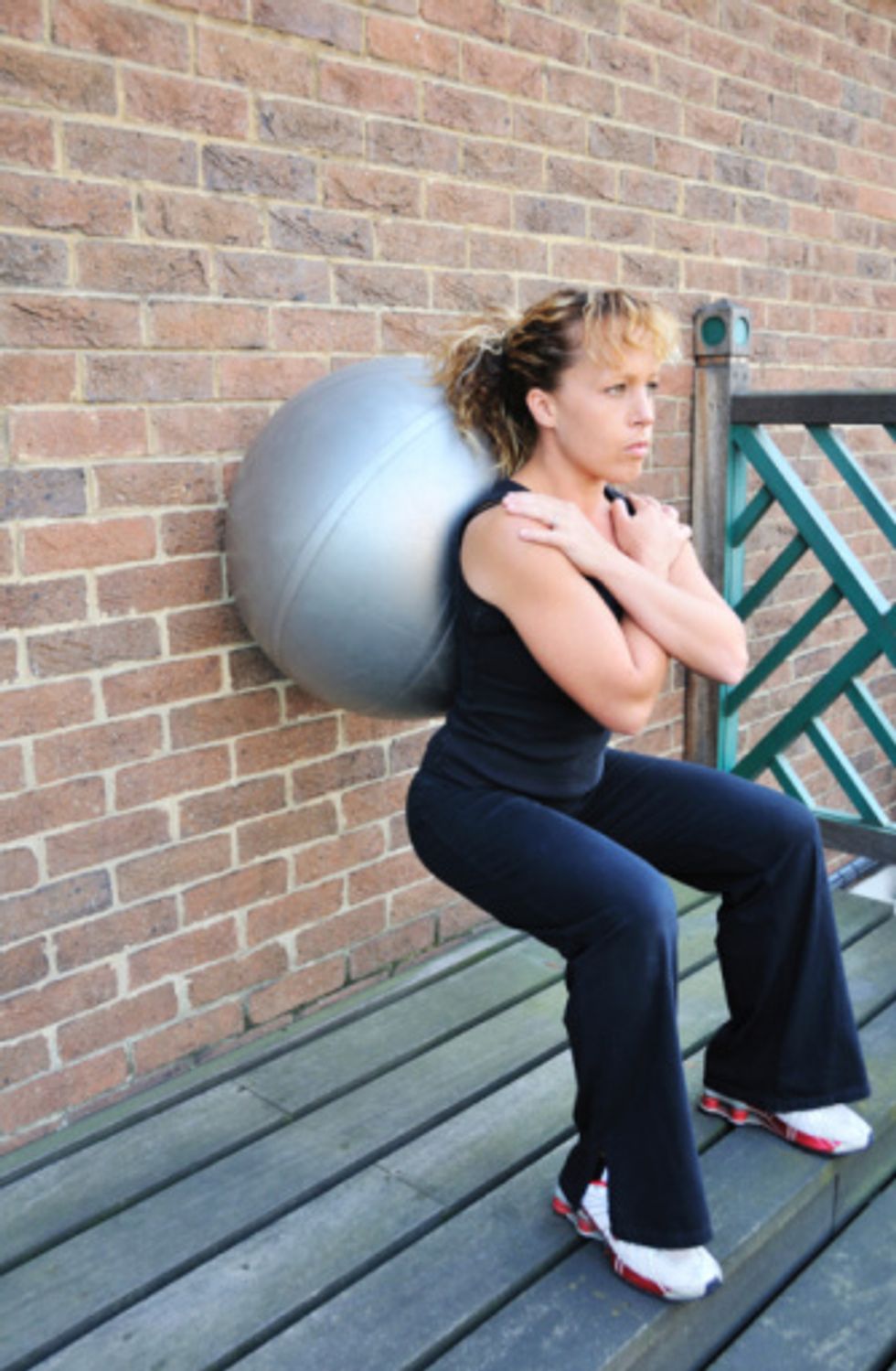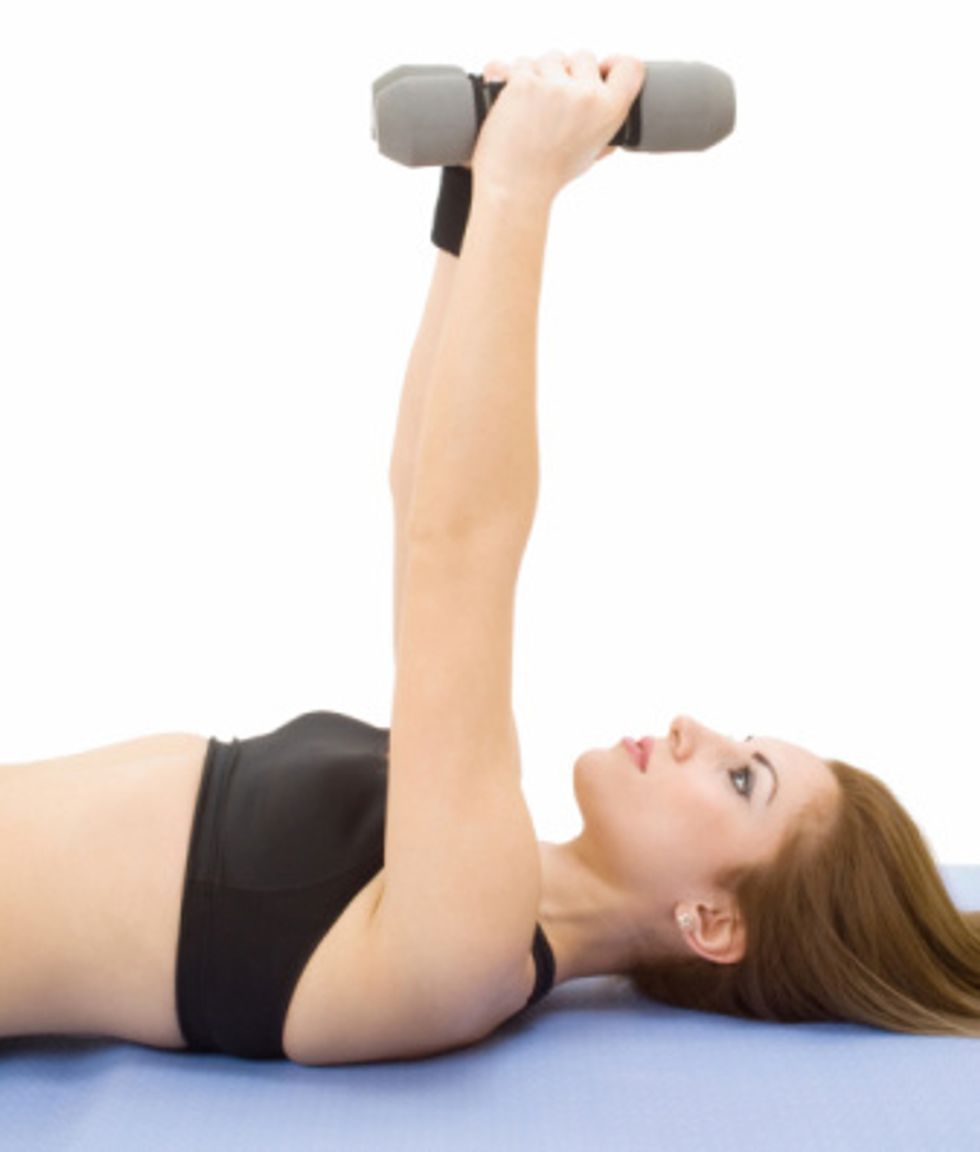If the only weight that you've lifted recently has a power button and can change the channels on your TV then perhaps it's time to consider adding a few new exercises to your routine. Just a few months of strength (also called resistance) training—at home, in a gym or fitness center—can lower your cholesterol, reduce your risk of cardiovascular disease, help you avoid osteoporosis, decrease arthritic symptoms and build muscle so you remain active and independent for years to come.
Ten minutes, twice a week
For those of us who are
perennially time-crunched (and who isn't?), Michael J. Hewitt, Ph. D., research director for exercise science at Canyon Ranch Health Resort in Tucson, created the strength-building Key 3® program as a minimal approach to strength work. The three exercises in the plan—wall squat, chest press and single arm row—take only about 10 minutes, twice a week. In that brief time, the three exercises work about 85 percent of the body's muscle mass. They can also stimulate bone growth, helping to curb osteopenia at the same time they're fighting sarcopenia.
Start building your muscle strength now with these three simple exercises:
• Stand with your back against a smooth wall. Your feet should be shoulder-width apart and about a 1-1/2 to two of your foot lengths from the wall.
• Bend knees slightly; hang arms freely at sides, using holding light weights.
• Slowly slide your back down the wall until knees come close to a 90-degree angle, but do not exceed it.
• Then press upward, back still against wall, until legs are nearly straight.
• Repeat.
Typically healthy adults will hold 10 to 25 lb in each hand (women) or 15 to 35 lb (men). Size of weights used will depend on one's body weight and strength level.
Chest Press:
• Lie on back with bent knees, arms perpendicular to body.
• Hold hand weights (3 to 5 lb. to start) directly over elbows.
• Slowly press hands up, bringing weights together in a triangular motion.
• Lower weights slowly until elbows return to floor.
Single Arm Row:
• Place one hand and knee on bench or edge of chair, with other foot on floor.
• Keep back flat and parallel to floor.
• Hold hand weight (8 to 10 lb. to start) in free hand, hanging directly below shoulder.
• Raise weight slowly to just under shoulder. Keep elbow close to side.
• Lower slowly and repeat.
• Reverse position to work opposite side.
Rules of the game
When just starting out, aim to do one set of eight to 12 repetitions (called reps) of each exercise. With strength training, you work to a level of fatigue at the end of each set. If you can only do six reps, you may need a lighter weight. If you easily reach 13 reps, it is time to use a heavier weight.
As you become accustomed to the exercises, build to doing two sets of each exercise, twice a week. With proficiency, you'll still be able to complete a session in about 10 minutes. You may even add a third session during the week, but allow at least a day's rest between them.
Note: the first exercise can be done with an exercise ball (pictured).
Click here to see more exercises you can do with a stability ball.
Learn simple stretches for warming up before your workout by
clicking here.









